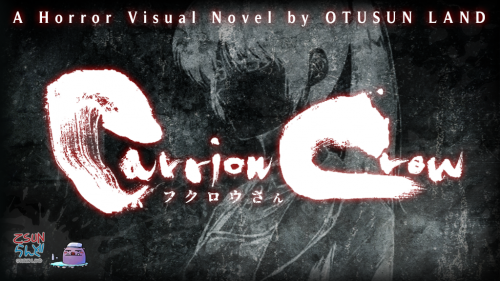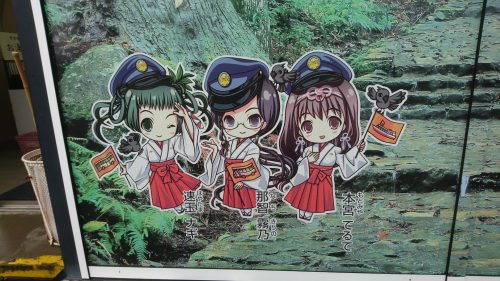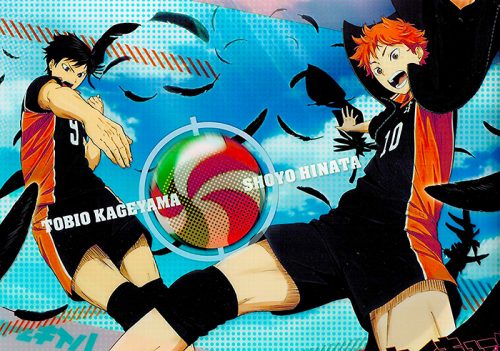
Crows are a very common sight in Japan, even in the big cities where they’re sometimes considered pests for their ability to open up trash cans and generally get into mischief as some of the most intelligent birds out there. They also have a surprisingly deep history in Japanese traditional culture and mythology that also bled over into modern popular media, including anime, of course! Today we’ll be exploring Japanese crows both as animals and a continuing part of Japanese culture. Let’s go!
Real Crows in Japan

As we mentioned in the intro, crows are a ubiquitous sight across Japan. In fact, two species, the large Jungle Crow (specifically a subspecies C. m. japonensis) and smaller Carrion Crow, can be found in various places with Jungle Crows generally living in cities and places above 1000 meters while Carrion Crows usually prefer more rural areas. Although some consider them pesky for their trash antics and fondness for stealing shiny objects for their nests, they also hunt and eat mice, which keeps even huge cities like Tokyo and Osaka relatively rodent-free. In Japanese, crows are called karasu.
Crows in Traditional Japanese Culture
Crows have appeared in various forms throughout Japanese culture and mythology with the most significant examples probably being the three-legged “eight-span” crow Yatagarasu and the Karasu-Tengu, a type of yokai or kami from traditional folk religion that is also incorporated into Shinto and Buddhism. We’ll go into more detail on those points in the next section but wanted to mention that crows are also commonly depicted in traditional Japanese art forms like ukiyo-e and are the namesake of two famous “crow castles”: Okayama Castle and Matsumoto Castle, which are called that for their black painted wood exteriors and, in Okayama Castle’s case, to purposely contrast with the famous “White Heron” Himeji Castle. They are also sometimes seen as a symbol of rebirth as crows will eat the bodies of the dead after battles.
Yatagarasu and Karasu-Tengu

Yatagarasu is a giant, three-legged crow deity in Japanese mythology said to be an auspicious messenger that is most famous for guiding Japan’s legendary first emperor, Jimmu, from the historical Kumano region to what would become Yamato where he would found his kingdom that would later become Japan. The symbolism of its three legs is not well defined but it has been suggested that it might represent Yatagarasu’s eternal existence as having one foot in the past, present, and future or heaven, earth, and mankind. It is a symbol of the region in modern-day Wakayama prefecture that is heavily associated with the famous Kumano Kodo pilgrimage and is also used in the logo of Japan’s National Soccer Team.
Karasu-Tengu are another significant crow-derived entity in Japanese mythology, a subset of the tengu which are winged and beaked, half-crow half-human “goblins” said to live in deep forests and high mountains, typically as ascetic priests who are masters of both magic and martial arts. They are a part of many famous stories and myths and are often associated with training great warriors, including famous actual samurai military commander Minamoto no Yoshitsune who, in one story, was said to be trained by a great tengu mountain king called Sojobo and his karasu-tengu attendants.
Crows in Modern Japanese Culture and Anime

As you might expect, many of these traditions have lived on and been adapted to the modern day with chibi yatagarasu mascots and other examples like the previously mentioned soccer team logo. Crows have also made their way into countless manga, anime and games with some notable examples being Itachi's crows and crow-based techniques in Naruto, pop idol and actual karasu-tengu Kurama Shinjirou from Kamisama Kiss, the yatagarasu-inspired Three Crows of One Punch Man, Nichijou’s wise-cracking, triangular crow, and Haru Nonaka's frequent crow companion Kansuke in the currently airing Yesterday wo Utatte!
We could go on, but it should be clear that crows continue to be a large part of Japanese pop culture, often drawing on famous depictions like yatagarasu and karasu-tengu for inspiration while sometimes also incorporating the more menacing image the animals have in most Western cultures where they are associated with death as birds that eat carrion like vultures. One final facet worth mentioning are “idiot crows” which are sometimes seen flying around cawing “baka” or “aho” (which both mean stupid or idiot) after a character says or does something dumb, as seen in Haikyuu!!, Air Gear, Naruto, etc.
Final Thoughts

CAW! We hope you were satisfied with our little exploration into the history of crows in Japan and learned a bit in the process! Let us know what you think about crows and crow characters (how about Yu Yu Hakusho’s Karasu, eh?) in the comments section below and be sure to stick around Honey’s for more of all things awesome, anime and otherwise! Until then, stay safe! See ya~!

